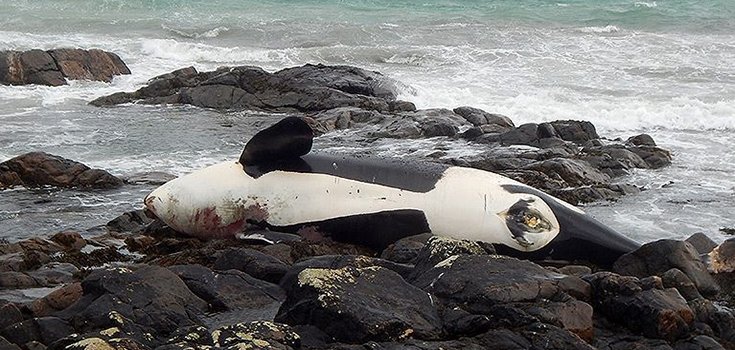Study: Monsanto’s PCBs Causing ‘Severe Impact’ on Whales and Dolphins

It has been highly reported that biotechnology company Monsanto made attempts to hide the true impact that toxic polychlorinated biphenyls (PCBs) have on the environment, which has led numerous cities to file lawsuits against the company. Now, new research has surfaced on the true effects behind Monsanto’s PCBs and their impact on wildlife.
The PCBs have been putting European killer whales and bottlenose striped dolphins at risk.
A recently-released study says that the PCB-contamination of the dolphin and whale’s habitats have caused entire populations to suffer. The exposure to PCBs is causing them to become reproductively-stagnate. In other words, the chemicals are causing reproductive impairment. Some scientists warn that some of these animals could experience serious damage if something isn’t done. A pod of killer whales off the coast of the UK has dwindled to just 8 individuals and has reportedly not given birth to a calf since 1992.
The study reports:
“Historic strandings data suggest that multiple BND resident or coastal groups in Europe became depleted or locally extinct in the late-1960s to mid-1970s, including those in the UK (e.g. Morecambe Bay; East coast of England) and the North Sea Dutch coast”
And as reported by The Guardian:
“The UK’s last pod of killer whales is doomed to extinction, with new research revealing western European waters as a global hotspot for the lingering legacy of toxic PCB pollution.”
‘Unprecedented Levels of PCBs’
In the study, published in the journal Scientific Reports, tissue samples from 1,081 marine animals, including killer whales, harbor porpoises and striped and bottlenose dolphins were taken. Researchers found unprecedented levels of PCBs in the tissues, even though PCBs have been banned in the UK since the 1980’s.
Bottlenose, striped dolphins and killer whales had amounts of the chemicals in their bodies that far surpassed the levels known to cause health problems such as reproductive failure.
“…three out of four species:- striped dolphins (SDs), bottlenose dolphins (BNDs) and killer whales (KWs) had mean PCB levels that markedly exceeded all known marine mammal PCB toxicity thresholds”
Though PCB levels have been dropping in US waters, the levels have remained constant in European waters, markedly so in industrialized nations. Paul Jepson of the Zoological Society of London, the study’s lead author, says they don’t know why. He remarked:
“. . . mitigation measures should really involve dealing with historic and current industrial uses in old equipment—transformers and things, in electrical equipment—PCBs leaking out of landfill into rivers, PCBs in marine sediments, which are often dredged to keep shipping lanes open, which makes them more bioavailable to get into the marine food chains.”

He further explained:
“One of the things that is particular about them [PCBs] is they dissolve in fat tissue. Animals will ingest them in their diets and then the PCBs will pass through the gut into the blood stream and then eventually settle out in the fat tissue, in the blubber.”
As larger mammals eat prey that also have PCB contamination, they then become subjected to a process called bioaccumulation. Female dolphins even pass along the chemicals to their offspring when they nurse them. Since much of the contamination is stored in the animal’s fat, the new calf becomes especially vulnerable as it sips from its mother’s PCB-contaminated fat stores.
The UK’s killer whales, which are known to consume a lot of seals, showed PCB levels in excess of 250 milligrams per kilo of fat, Jepson said, while killer whales off the Iceland and Norwegian coasts, which consume mostly herring, showed only 25 milligrams per kilo.
Some marine mammal populations off coasts of Spain, Portugal, and France are also failing to reproduce.
About 1.1 million tons of PCB-contaminated materials in the European Union still await proper disposal.
“Despite regulations and mitigation measures to reduce PCB pollution,” Jepson said, “the levels are so high they will have toxic effects.”

Additional Sources:
Take Part/revealing-cove-dolphins-toxic-secrets
Featured image credit: John Bowler/RSPB Scotland
